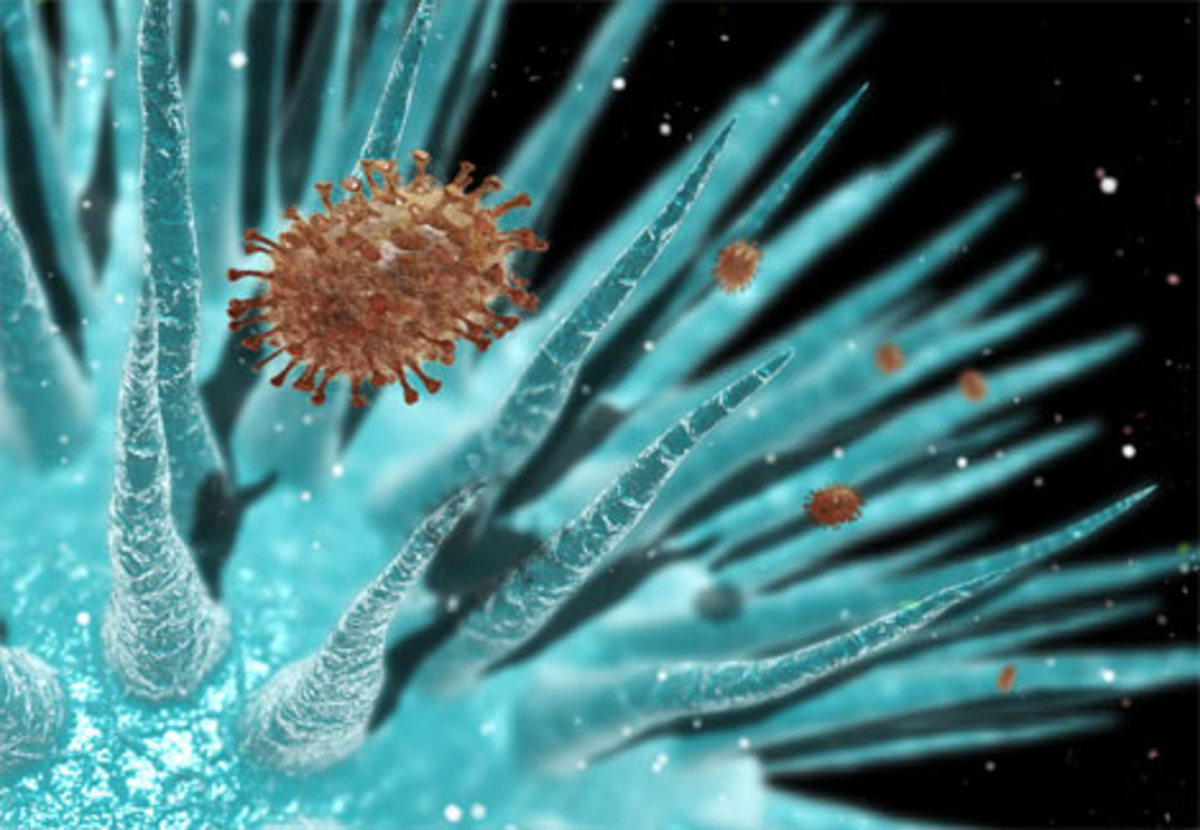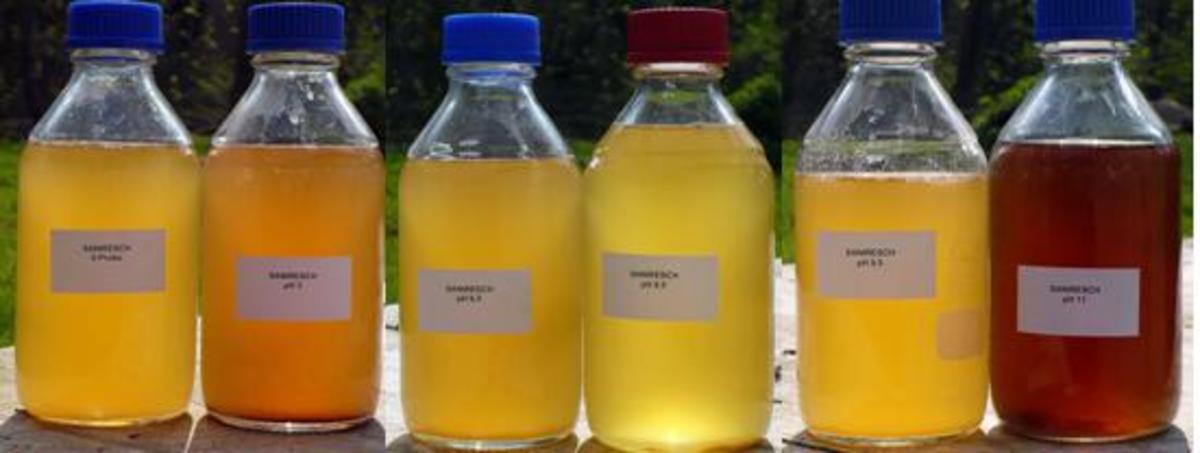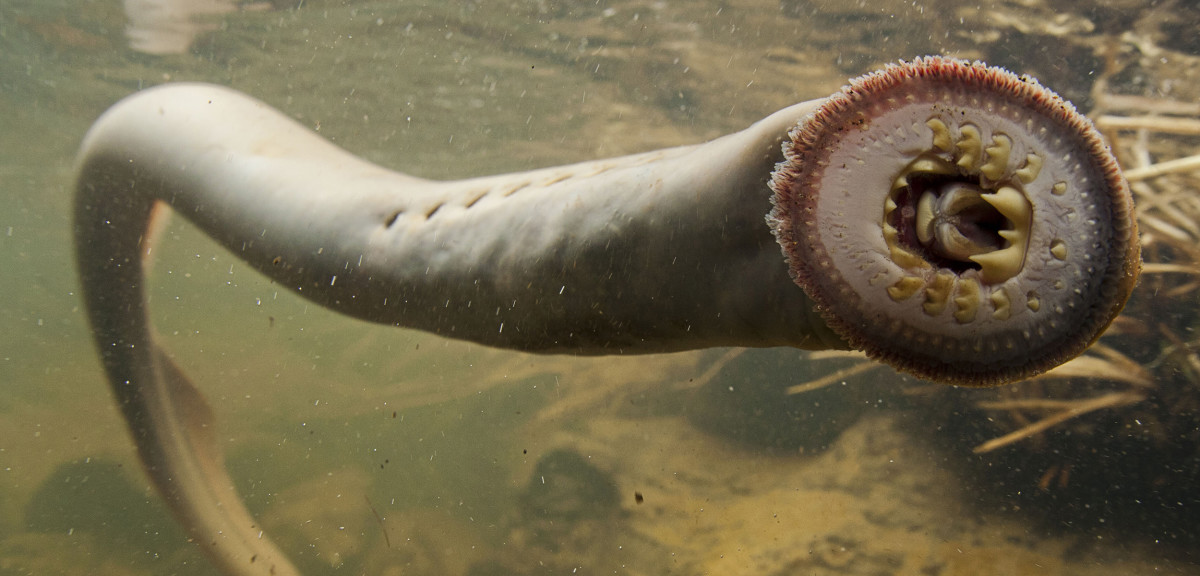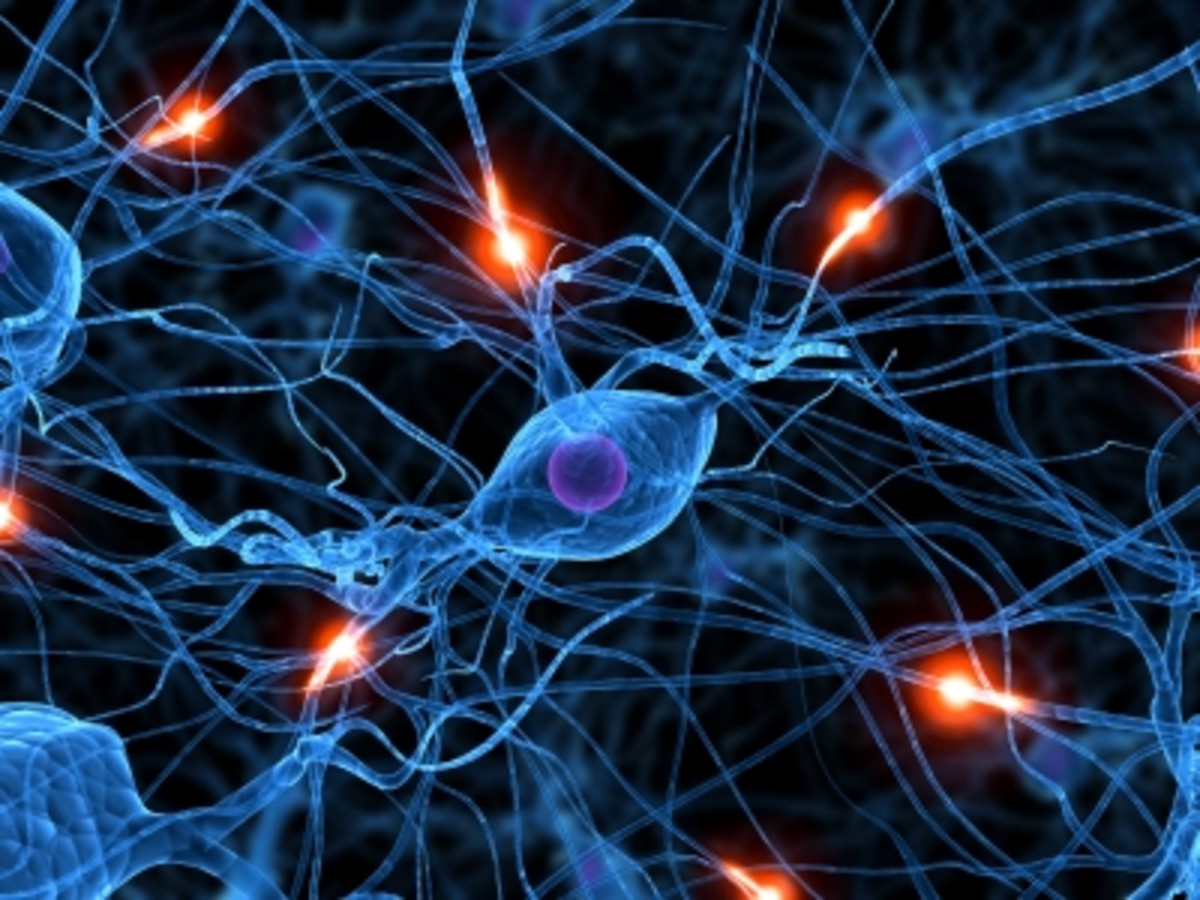Tropical Diseases
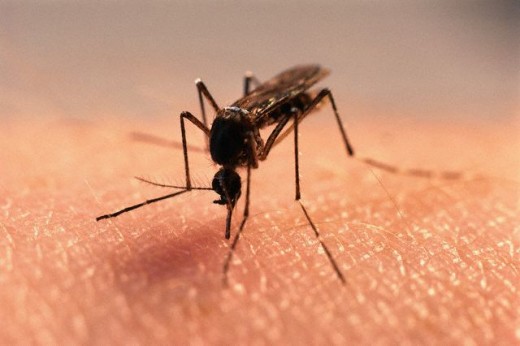
Disease is a conditon in which normal body functions are disturbed either temporarily or permanently. There are several stages from the time the disease causing organisms enter our body and the person becomes sick. These stages together are called 'Process of Disease'.
Process of Disease:
There are four stages in the process of disease
a) Infection
b) Incubation
c) Manifestation
d) Termination
Infection:
The entry of a disease causing organism into our body is called infection. The entry of a disease causing organism into the body is through direct contact with another sick person or with the articles used by a sick person through food, water, air and other animals like flies, mosquitoes, rats etc.,
Sources of Infection:
A habitat where the disease causing organism lives prior to infection is known as the ''Reservoir''.
There are 3 types of Reservoirs:
1) Human Reservoir
2) Animal Reservoir
3) Reservoir of non-living substances
The disease causing organism may or may not produce sickness to the reservoirs. Carrier organisms are those in which the disease causing organism is present in large numbers but does not produce sickness.
Eg: Rats are carriers for plague bacteria, monkeys are carriers for yellow fever, mosquitoes
are carriers for malaria etc.,
The method by which the disease causing organisms are transferred from the reservoir to the host is called as the ''Transmission of disease''.
There are several methods by which a disease causing organism can be transferred from the reservoir to the host organism.
Direct contact:
Disease causing organism may be transferred immediately from reservoir or carrier to a healthy person by direct physical contact. Diseases like skin and eye are transferred by direct physical contact. Soil also has several diseases causing organism.
Eg: Tetanus causing bacteria are commonly transferred from soil into the body.
Droplet infection:
Droplets of saliva are sprayed out when we cough, sneeze or spit. Diseases like mumps, influenza, measles, chicken pox, common cold, whooping cough and tuberculosis etc are transmitted by this manner.
Vehicle borne transmission:
In this type, the disease causing organism is transmitted through another living animal which is called as vector. The most common vectors are flies, mosquitoes, lice, cockroaches, rats, mice, bats etc., Diseases such as plague, malaria are caused by this method.
Air borne transmission:
Air acts as a carrier or vehicle for transferring some of the diseases causing organism, spores and cysts etc. Diseases such as tuberculosis, influenza, chicken pox, measles, pneumonia are transferred in this manner.
Unhygienic habits:
Unhygienic conditions like; without washing hands, eating food and drinking water may cause transfer of disease causing organisms. In cattle, mad cow disease occurs due to the contamination of cattle feed with the disease causing organisms.
Incubation Period:
The time elapsed between the entry of the disease causing organism into the body and the appearance of the sickness is called ''Incubation period". Incubation period for different diseases may be from few hours to few years. The incubation period for different diseases is given below.
Diseases
| Incubation period
| |
|---|---|---|
1. Chicken pox, Measles, Mumps
| 10 days to 3 weeks
| |
2. Hepatitis, Rabies, Leprosy
| weeks to years
| |
3. African Sleeping Sickness
| 20 - 30 Years
| |
4. Manipestation
| Appearance of symptoms after the incubation period is called 'manifestation period' of the disease.
|
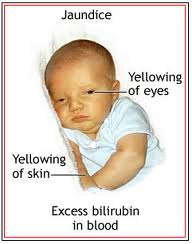
Termination:
Halting of the disease process either temporarily or permanently is called ''Termination''. This may occur naturally or with the help of drugs that kill the disease causing organisms.
Common Diseases
Jaundice:
Bilirubin is an yellow pigment which is formed from haemoglobin when the old and wormout red blood cells are destroyed in the liver. Bilirubin is secreted into the bile fluid by the liver cells (Hepatocytes). Bile flows from liver into the gall bladder in which bile is concentrated and stored. During digestion, bile is secreted into the duodenum and is required for the emulsification and digestion of lipids during digestion in the intestine. Bilirubin is absorbed into the blood along with digested food from intestine. From the blood Bilirubin is extracted by the Kidney and is excreted through urine. Yellow colour of the urine is due to the presence of bilirubin and its metabolities. Therefore Jaundice is a disease which is caused due to the accumulation of a yellow coloured pigment called bilirubin in blood and tissues.
Symptoms:
In this disease skin colour turns into yellow. White of an eye turns to yellow. Patient suffers from lack of apetite, flatulence (gas formation) and constipation etc.
Mumps:
A virus called ''Myxovirus Parotidis (RNA)'' causes Mumps in the age groups of children 5 to 15 Yrs. The disease spreads mainly by droplet method of transmission or by direct contact with an infected person. Incubation period varies from 2 to 3 Weeks.
Symptoms:
Causes pain and swelling in salivary glands mainly parotid glands. These will be pain in opening the mouth, earache and fever. The virus may even effect the pancreas and kidney. Vaccination is the only prevention against mumps.
Measles:
Measles is also known as Rubella. The word rubella means 'Red spots'. This disease is called by a virus Paramyxovirus (RNA). The main symptoms for a disease are fever and cough followed by a typical rash. Hence the infection is by droplet infection. Children in the age group of 6 months to 3 Yrs are mostly affected by this disease.
Vaccination is the only method to reduce the incidence of the disease.
Encephalitis:
It is caused by a group of viruses known as arboviruses and is a mosquito borne disease. Vertebrate hosts like pigs, cattle, poultry and other birds acts as Reservoirs and mosquitoes are the carries. Incubation period for the disease in between 5 - 15 days. The disease stands with mild fever and headache and effects the central nervous system which leads to coma and death.

Filariasis:
It is a disease caused by 2 nematode worms called wucheraria Bancrofti and wucheraria Malay. Adult worm lives in lymph glands and lymph vessels of man. The female worm is viviparous which gives birth to the larvae, microfilaria. During the day time the larvae move to blood vessels situated deep in the body. During the night time the larvae enters into the blood vessels of the superficial parts of the body. Larvae enter the mosquito when it bites an infected person. In Mosquito changes take place with the formation of Microfilaria. When the infected mosquito bites a healthy person, these larvae enter into lymph vessels of hat person. The incubation period is 5 to 18 months.
Malaria:
Malaria is caused by a protozoan parasite called ''Plasmodium''. Malaria means ''bad-air'' and is known since ancient times. That was almost from the 5th century BC. Laveran discovered the Malarial parasite in the year 1880.
Mason predicted in 1894 that mosquitoes might transmit Malaria. Sir Ronald Ross in the year 1897 confirmed that Mosquitoes transmit malaria.
Life History of Malarial Parasite- in Mosquito:
The life cycle of Malarial Parasite in Mosquito is called 'sexual cycle'. When the female Anopheles mosquito sucks the blood of a malarial patient. Then gametocytes enter its digestive system.
The gametocytes are of 2 types.
1. macrogametocytes
2. microgametocytes.
Gametocytes migrate into the wall of the stomach and undergo further development.
The macrogametocyte develops into a macrogamete. This is equivalent to fertilised ovum. Like wise the microgametocyte divides and forms microgametes. This is equivalent to sperm.
These two gametes fuse together forming a ''Zygote''. The Zygote divides to produce ''Sporozoits''. They migrate to the salivary glands of mosquito and are transferred to a new host when the mosquito bites.
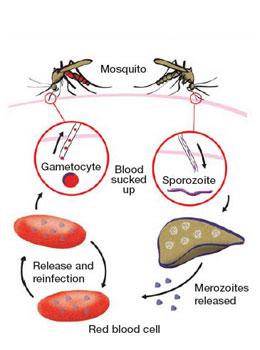
Life history of malarial parasite in man:
a) Pre-Erythrocytic Cycle: When an infected female anopheles mosquito bites a man, the parasite in the form of sporozoites enter the man's blood. The sporozoits spend about 30 minutes in the blood. Then they enter the liver cells. They feed on the contents of the liver cells. Finally they fill the entire cell. This stage is called ''Cryptoschizont''.
Schizonts reproduce a sexually producing dauther cells. These are called ''Cryptomerozoits''. When the liver cell ruptures, the merozoits are released into the blood. The merozoits proliferates in the liver cells and enters into Red Blood Cells. Since all these changes take place in the liver cells, it is called ''Pre-erythrocytic cycle''.
b) Erythrocytic cycle:
The merozoits enters into the Red Blood Cells and grows in size. It occupies the enter inner space of the RBC's and are called ''Schizonts''. The Schizonts divide repeatedly and form 6-24 merozoits. The RBCs ruptures and release merozoits into the blood. The merozoits divides and divides which develops into gametocytes in the RBCs. Further development of the gametocytes takes place into the body of the mosquito.




